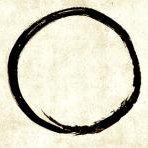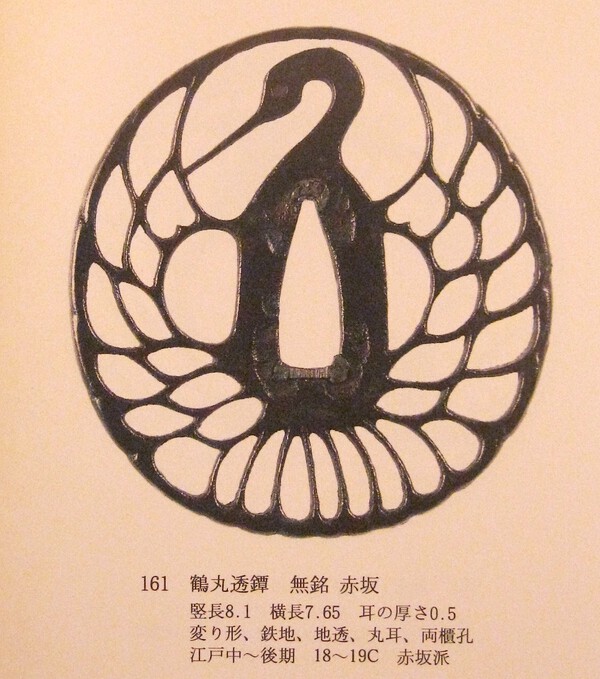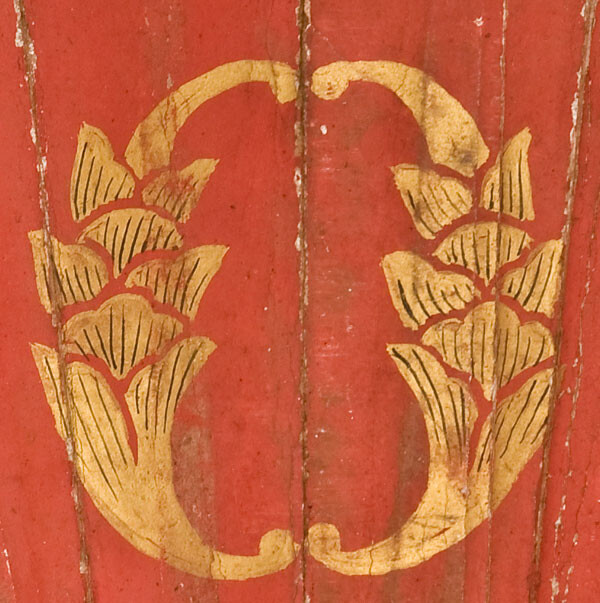-
Posts
407 -
Joined
-
Last visited
-
Days Won
1
Content Type
Profiles
Forums
Events
Store
Downloads
Gallery
Everything posted by FlorianB
-
IMHO it’s a typical Edo-Period Naginata with a koshirae for representation. Interesting piece, however the laquer suffers a lot of damage, parts are missing. I can’t tell if and how it can restored and no idea about the costs. On the first glimpse the blade seems worth polishing. There are rusty areas and the tip is broken off but a polisher could mend this. More pics from blade and tang are needed to judge about it. I can't see any reason why not taking the blade out of the shaft. Florian
-
Christian, It was simply the only Tsuba I found showing this peculiar bent head/neck similar to Bruno’s Tsuba. That’s all. Puts the depiction of this particular Akasaka the researched one on the same level (or vice versa)? I don’t think so. Sorry, but I still can’t see Your point. Florian
-
Christian, I can’t see any reason to get upset - I just pointed out the similarities. BTW I don’t think the Tsuba in question is bad. It’s a younger one, maybe a little bit ornamental but interesting. Florian
-
Found this in a book about the Lundgren Collection: Akasaka, middle to late Edo period. Not exactly the same but note the particular form of the head similar to Yours. Florian
-
IMHO Kyo-sukashi could be excluded because they always reproduced the same crane design. This one is a later piece, I’ve seen a similar one but can't remember where so I have to research my books first. Florian
-
What a beauty! It proofs deepest understanding of Japanese aesthetics. Florian
-
Concerning the hitsu-ana they’re just in the traditional shape so I don’t see the point. If You’re bothered by the holes find someone who can plug them (although they’ll never vanish completely). At least the artist considered both the kogai-hitsu-ana and the inome by placing the dragon. Florian
-
I have no idea what this tsuba looks like but if I interpret the determination correctly, the first “ko” obviously means “early” or “old”, but has nothing to do with “ko-sukashi” in the sense of small negative openings. However, an interesting string of terms: The Mito-Kinko-school (mid to late Edo period) was also working in Shoami-style and I only know solid plates with carvings, Kyo sukashi pieces (Ko-Kyo-sukashi = Heianjo sukashi? pre Edo period) are everytimes in ji-sukashi - I can’t work it out on my own . Florian
-
I’m not sure about the question. Are You looking for a Kyo-sukashi-Tsuba with a solid plate displaying negative sukashi? Never heard of it. Years ago I have seen a tsuba labelled as Ko-Kyo-Shoami, i.e. an early Kyo-Shoami (also of Kyoto origin). In this case the kanji for “ko” (old) differs from the kanji “ko” (small)... Florian
-
Did I miss the dimensions? For a Kyo-sukashi-work I would expect a circular form with hitsu-ana and a classical design in general. Even the seppa dai looks too massive to be Kyo sukashi. Also a Daigoro work won’t fit in my eyes. And I never heard of layer technique concerning Kyo-sukashi. Although the mimi is only ko-niku and the plate thin the appearance of layers, the oval form, the modern and original look (note how cunnigly the karigane and the ends of the snowflakes are connected) and the bat-like shaped kiri I stick to my Akasaka-attribution - because I have no better idea at least. Florian
-
Chris, Because of the modern appearance of the design with its unique interpretation of the gearwheel (?) and the layers (or just scratches?) seen in the rim I would go for later Akasaka, when their design got a more fragil touch. Florian
-
Ed, as written in the "Mon"-book by Chappelear/Hawley You refer to about 7500 kamon were in existence and in this book only a smaller number are selected which represent the final form. On Your Tsuba not the mentioned “final form” but a more naturalistic view of this plant is depicted. IMHO this hints to an early version of this kamon still without the graphic simplicity of later ones but with more artistic licence. Researching one of my own Tsuba showing an unusual myoga-mon I found this in the depths of the internet: Probably an old shop-sign whith a slim variation of myoga. Although not Your gyoyo-kamon I’d like to share it to prove a larger variety in style. Florian
-
Following this discussion I’ve got the notion that the mixing of differnent stylistic devices becoming popular in the late Edo-period makes it impossible to pin down a special school. So take it as it is - a piece of real art work which show the high levelled quality of this unknown artisan concerning both artistic and technical skills. Florian
-
Thank You for clarification. In the future I will try to avoid to publish personal speculations. I just can refer to dates given in different sources. In how far these dates are reliable I can’t work out. Maybe those could be pure assumptions by sellers or collectors. Also it seems that the terms “shinchu” and “sentoku” are mixed up. Florian
-
I'm astonished that shinchu was invented not before 1600 because some brass ornamented Tsuba are dated back to Muromachi-period could be found. All of them elder Tsuba which has been overworked later? I wondered still in the past why brass was so highly esteemed, even today they are highly prized by Japanese collectors while western people often think it inferior. I don’t believe the shinchu production too laborious so I think the restrained lustre (in comparision to gold) fits perfectly to the Japanese sense of aestetics. Florian
-
If we assume, the tendrils should have been contain brass wire, a later Heinajo-style attribution is acceptable. We can only speculate, why this Tsuba shows the todays appearance, but with all due respect I would be careful to connect a decent quality with wabi-sabi aesthetic. There has been a discussion about this subject a time ago ( http://www.militaria.co.za/nmb/topic/26501-which-of-your-tsubas-best-embodies-the-wabi-sabi-aesthetic/?hl=wabi-sabi ) and a lot could be learned from this great thread about it. Florian
-
I think it’s a later work, which isn’t as elaborate executed as older ones. The kiku blossom on the back side is missing (the empty circle). Maybe the tendrils should have been filled with brass wire, too, but either all has gone or it was never completed. However the carved tendrils make a nice contrast to the filled areas so take it as a study piece. Florian
-
Chris, sorry, I misunderstood Your coloured lines, now I see Your point and of course You’re right. My idea referred to the design. Florian
-
Here’s another example of Ko-Katchushi, this one with Juyo attribution. Note that the ornaments are close to the nakago-ana and would be hidden partially by the tsuka, too. @ Chris: Isn’t an offset axis typical for elder tsuba following the idea of imperfection? Florian
-
Opinions differ, but definitively not Owari. Mr Haynes obviously refers to the later late Muromachi-period and the beginning of the Momoyama-period 1573 (1574 by other sources), the latter period well known for more flamboyant styled Tsuba. So I would take the named years as a classification into this era. Certainly this design has been invented about the mentioned years but has been also reproduced in later times, so a temporal attribution isn’t as simple. Seeing the mimi I agree with the Ko-Shoami attribution of the second one. Ko-Shoami-Tsuba show sometimes different sizes in the hitsu-ana, too. Concerning the first and the third one, with its cleverly done mokko-shape and the large size, which is more typical for Kyo-style but for Shoami, I stick to my Kyo-sukashi attribution although it could be early Edo-period by the pictures of the mimi. Because of the very exact geometric execution of the first one I think it's younger, about Genroku. But without examinig the original pieces my opinion is only speculation based on textbook knowledge. Florian
-
Grev, forget to ask: what about the mimi? Kaku, Ko-niku, maru? Could help to specify the origin. Florian
-
Henry, generally the seppa-dai mirrors the saya cross section but there are enough examples showing freely interpreted seppa-dai (even Tsuba without a seppa dai ). Here’s a picture of a Kyo-sukashi from Mr. Tsuruta’s Aoi-Museum-site (if I remember correctly) in which the geometric motif determines the form of the seppa-dai: So at least there are less rules but mere customs so every smith could put his his own ideas into a Tsuba. Florian
-
Right, but as always there are exceptions from the rule. In some cases depending on the design other seppa-dai-forms were produced (like those above). Florian
-
I’ve seen examples of this design papered to Kyo-sukashi, probably Genroku to late Edo-period when design and rim became bolder executed. There are similar Akasaka-pieces, too, often easy to recognize by a smaller kogai-hitsu-ana. Concerning the sizes and the overall appearance I suppose #1 and #3 to be Kyo-sukashi-style, about mid Edo period, #2 Akasaka-style from the same time. However - just a cautious guess. Florian
-
I persume it’s Aizu-Shoami. Interesting theme and well executed. I agree with Mauro and Brian not to remove the mei. A gimei isn’t nice but so what. In my opinion much more worse is the somewhat strangely modified nakago-ana. But I don’t know if it is a reason to reject a paper... At least a Hozon-paper certifies the Japanese origin and a certain artistic value. You could see that by Yourself - so why needing a paper? Florian







